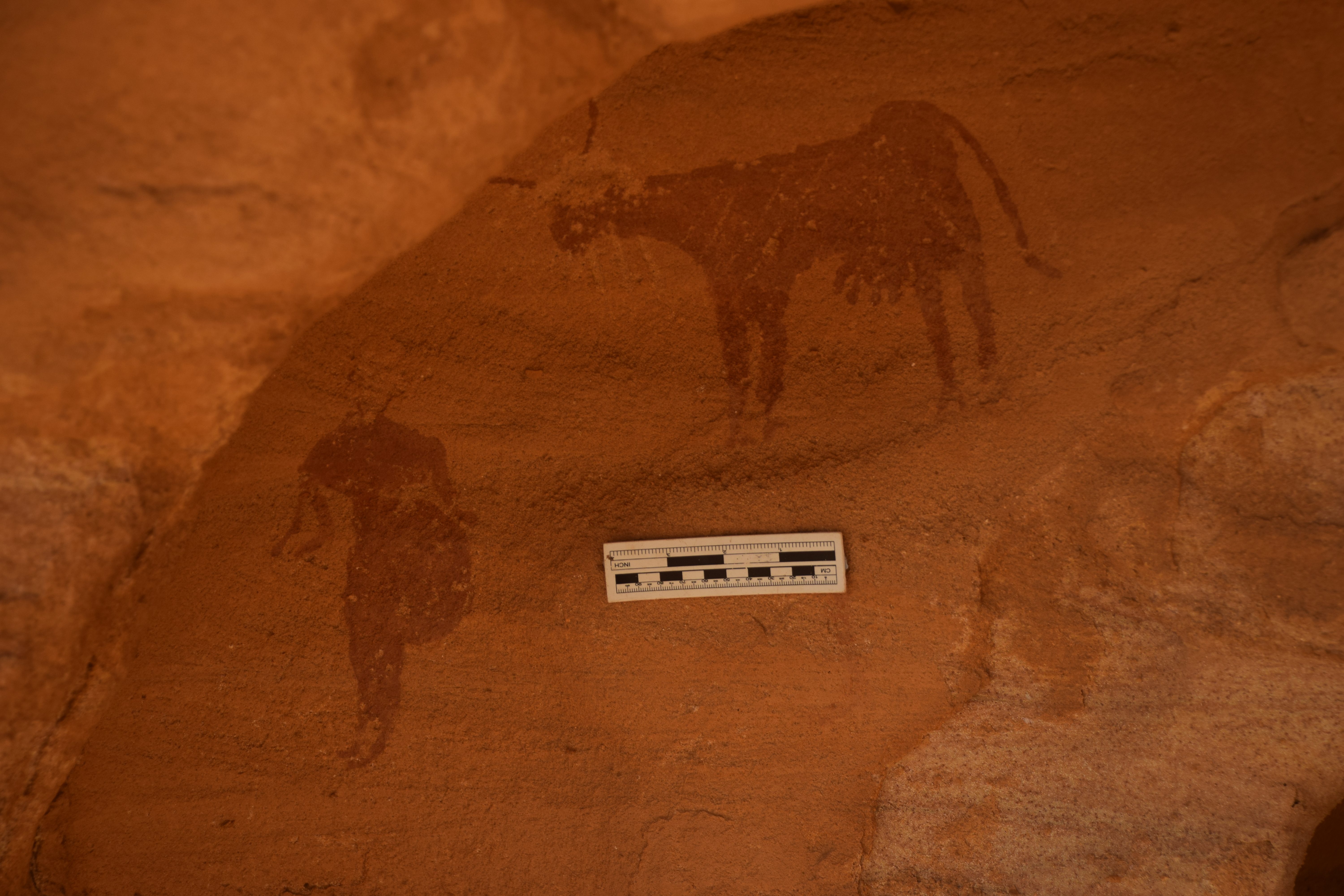New archaeological findings from the hyper-arid Atbai Desert, in Eastern Sudan, indicate the Sahara Desert was once a lush and green environment.
Dr Julien Cooper from the Department of History and Archaeology, led a team of archaeologists in 2018 and 2019 on the Atbai Survey Project, discovering 16 new rock art sites in Wadi Halfa, one of the most desolate and driest areas of the Sahara. Almost all of the newly discovered artwork, which dates back 4000 years, features the presence of cattle.
“It was puzzling to find cattle carved on desert rock walls as they require plenty of water and acres of pasture, and would not survive in the dry and arid environment of the Sahara today,” says Dr Julien Cooper.
“The presence of cattle in ancient rock art is one of the most important pieces of evidence establishing a once ‘green Sahara.’”
A rare example of a red-painted cow in a rock shelter, accompanied by a man
The rock art discovered in Eastern Sudan also paints the desert as a grassy savannah, brimming with pools, rivers, swamps and waterholes and home to a variety of African savannah fauna such as the giraffe and elephant.
The idea of a ‘green Sahara’ has been proven in previous archaeological and climatic fieldwork and research, with experts referring to this as the ‘African humid period’ – a time of increased summer monsoon rainfall which began approximately 15,000 years ago and ended roughly 5,000 years ago.
Depictions of humans alongside the cattle could indicate the act of milking, suggesting the region was once occupied by cattle pastoralists until as late as the second or third millennium BCE. After this point, decreasing rainfall rendered cattle pastoralism impossible. Today, this region receives almost no annual rainfall.
Following the end of the ‘African humid period’, around 3000 BCE, lakes and rivers began to dry up, sand covered dead pastures and most of the human population left the Sahara for refuge closer to the Nile.
“The Atbai Desert around Wadi Halfa, where the new rock art was discovered, became almost completely depopulated. For those who remained, cattle were abandoned for sheep and goats.”
“This would have had major ramification on all aspects of human life – from diet and limited milk supplies, migratory patterns of herding families and the identity and livelihood of those who depended on their cattle.”
Today, cattle is a symbol of identity and significance across South Sudan and parts of East Africa. Cattle are decorated, branded and have a significant role in funerary customers, with cattle skulls marking graves and consumed in feasts.
Read more here.
